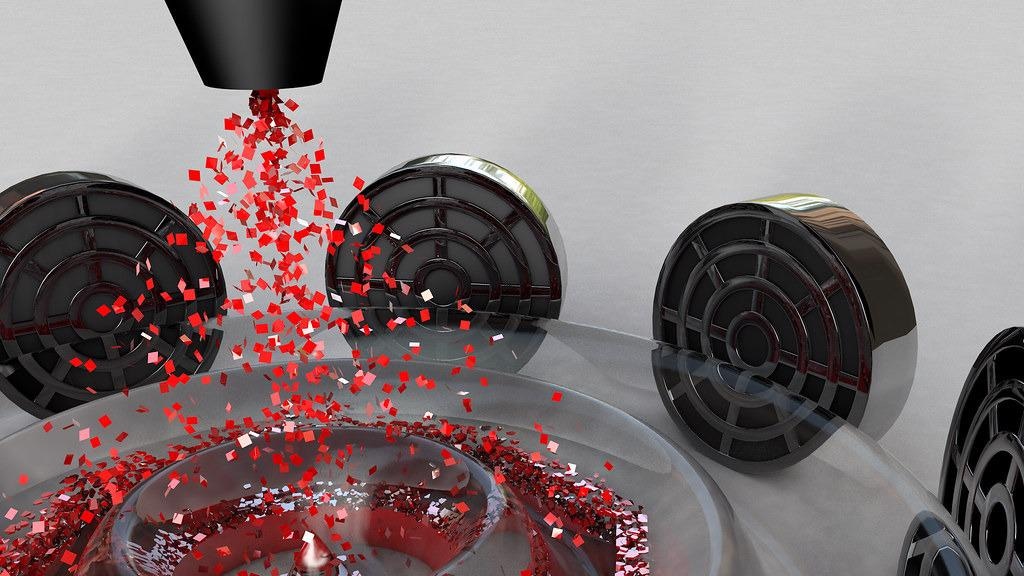Mar 8 2021
In a new study, scientists have harnessed the power of sound in air to develop a technique to coax microscopic particles and droplets into accurate patterns. The technique could have far-reaching implications for printing, specifically in the fields of electronics and medicine.
 Ultrasound and computer algorithms control how material settles into shape. Image Credit: University of Bath.
Ultrasound and computer algorithms control how material settles into shape. Image Credit: University of Bath.
Researchers from the Universities of Bath and Bristol have demonstrated that precise, preset patterns can be formed on surfaces using aerosol particles or droplets, with the help of computer-controlled ultrasound.
A paper published recently in the Advanced Materials Technologies journal describes the completely new technique known as 'sonolithography.'
The power of ultrasound has already been shown to levitate small particles. We are excited to have hugely expanded the range of applications by patterning dense clouds of material in air at scale and being able to algorithmically control how the material settles into shapes.
Mike Fraser, Professor, Department of Computer Science, University of Bath
The team is confident that the new study could completely transform printing, optimizing the precision, speed and cost of non-contact patterning techniques in air. The study already demonstrates the prospects of sonolithography for biofabrication.
According to Dr Jenna Shapiro, lead author of the study and a research associate in the School of Cellular and Molecular Medicine at the University of Bristol, “Sonolithography enables gentle, non-contact and rapid patterning of cells and biomaterials on surfaces. Tissue engineering can use biofabrication methods to build defined structures of cells and materials. We are adding a new technique to the biofabrication toolbox.”
The objects we are manipulating are the size of water drops in clouds. It’s incredibly exciting to be able to move such small things with such fine control. This could allow us to direct aerosol sprays with unheard of precision, with applications such as drug delivery or wound healing.
Bruce Drinkwater, Professor of Ultrasonics, Department of Mechanical Engineering, University of Bristol
Apart from its applications in biomedicine, the research has demonstrated that the technique can be applied to a range of materials. The researchers are keen to develop another area called printed electronics, where sonolithography will be used to arrange conductive inks into components and circuits.
Journal Reference:
Shapiro, J. M., et al. (2021) Sonolithography: In‐Air Ultrasonic Particulate and Droplet Manipulation for Multiscale Surface Patterning. Advanced Materials Technologies. doi.org/10.1002/admt.202000689.